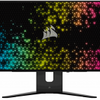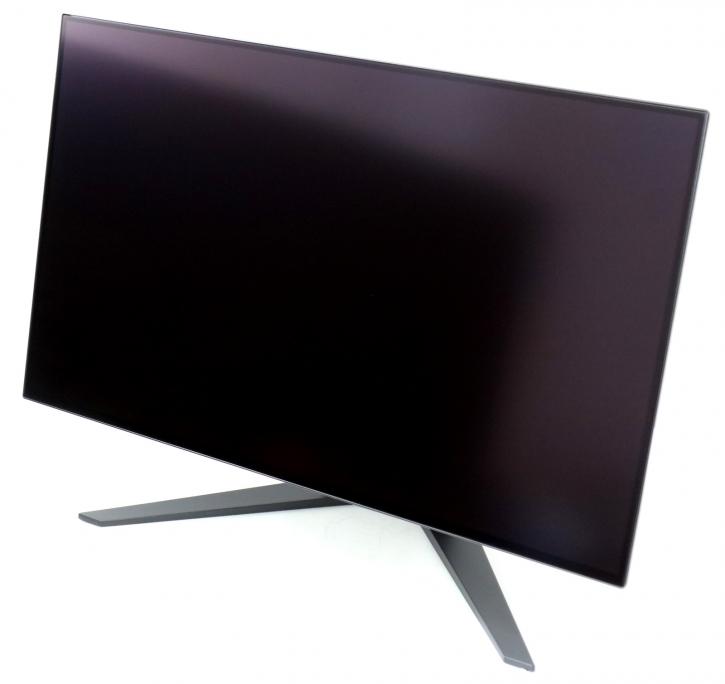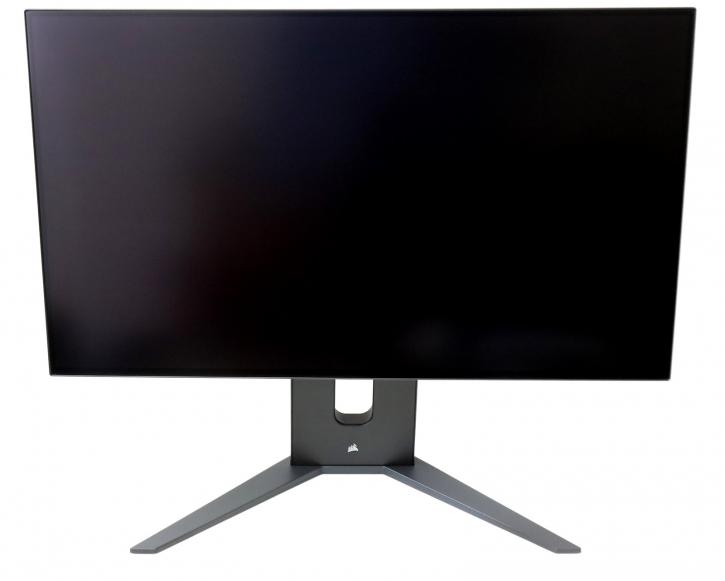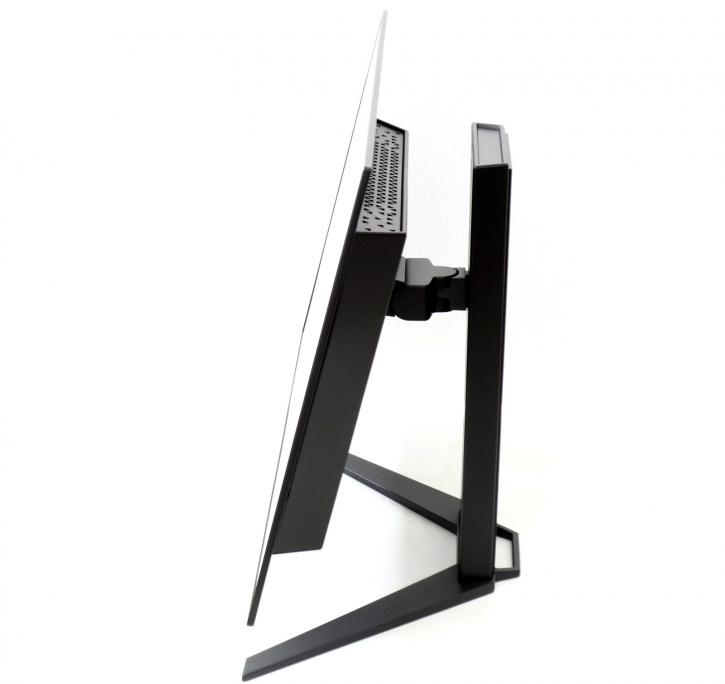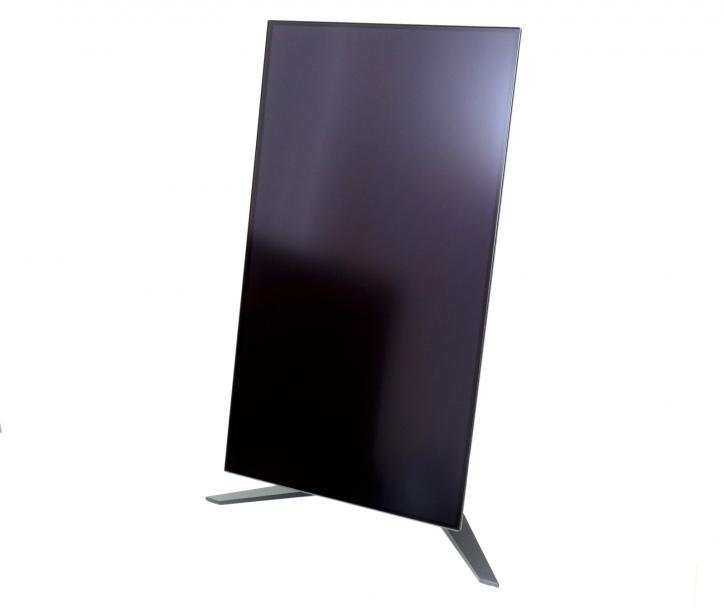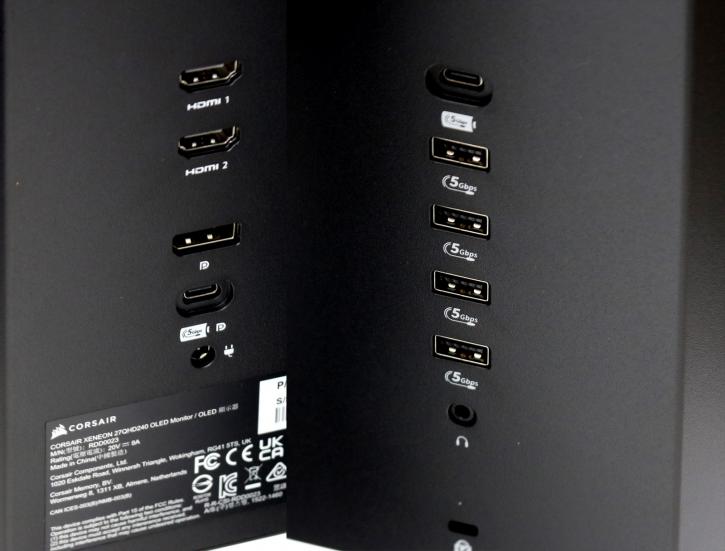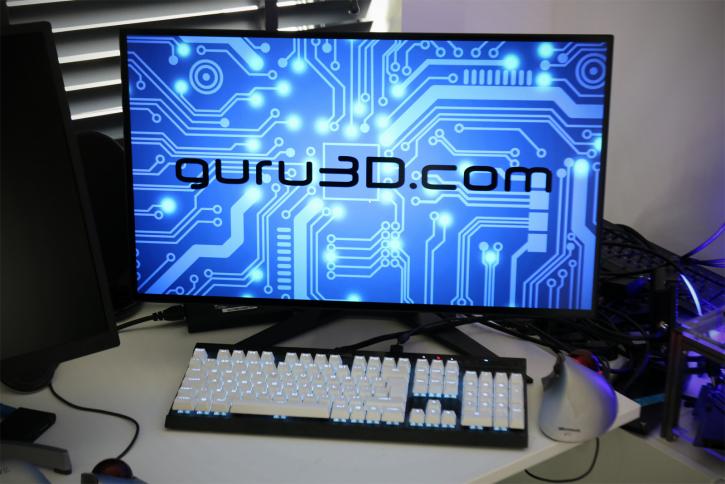Photo overview
Photo overview
The monitor differentiates itself from numerous OLED televisions and monitors known for their reflective 'dark mirror' characteristics, courtesy of its effective anti-glare coating, clearly evident in the accompanying image. In brightly lit conditions, like our testing environment, this coating substantially minimizes reflections. Although some users might perceive a decrease in contrast relative to glossy screens, the benefit of a glare-free display is a notable merit.
The panel and casing of the monitor bear a black boundary, akin to LCD displays. This border circumvents the screen, featuring a marginally thicker edge at the bottom which is hardly discernible. Notably, the monitor incorporates only one input that can accommodate a 240Hz frequency. However, this is unlikely to pose a significant concern for individuals planning to operate a single, high-performing gaming PC.
The monitor stand is fashioned to minimize desk space infringement, avoiding spindly legs or a bulky control panel. In a practical scenario, the preference would lean towards a VESA arm for enhanced positioning flexibility. Yet, the existing stand, while offering limited tilt functionality, feels somewhat restricted.
You can tilt your screen within a range of -7 to +15 degrees, effortlessly rotate it by 30 degrees in either direction, or set it upright by 90 degrees using the convenient pivot function. Additionally, enjoy the flexibility of adjusting the height by up to 100 mm. Should you prefer to use an alternative stand or mount, rest assured that our product is compatible with a VESA mount featuring 100 × 100 mm dimensions.
The monitor comes equipped with a DisplayPort 1.4 and two HDMI 2.0 ports. The lack of HDMI 2.1 may disappoint some consumers hoping to connect gaming consoles for increased frame rates. Regardless, HDMI 2.0 can adequately support a 120Hz QHD resolution. Interestingly, certain gaming laptops come without DisplayPort 1.4 but offer HDMI 2.1, allowing gamers to enjoy a nice 240Hz refresh rate.
Despite USB-C's increasing prevalence, monitor manufacturers have predominantly stuck to USB-B, consequently adding to cable clutter. Incorporating the more adaptable USB-C connection in this monitor is a refreshing alteration. With USB-C, one can manage everything from display to hub connectivity, simplifying the process significantly. Notably, the necessary USB-C cable is provided in the package, removing the need for a separate acquisition. There is no RGB lighting or logo projection.
